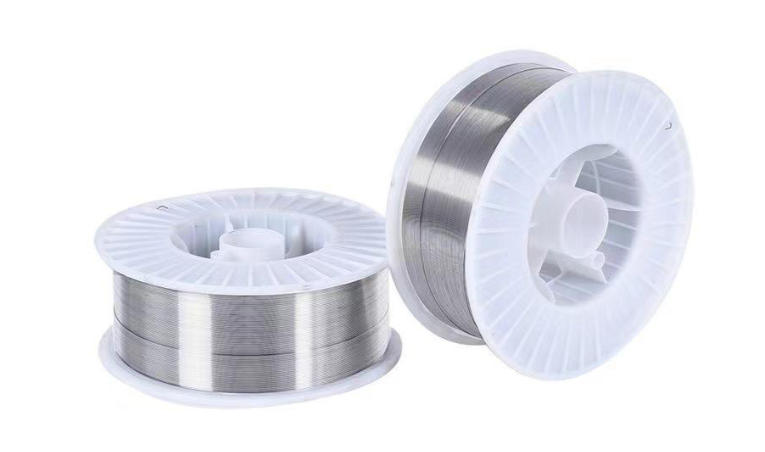Welding Wire: Selection, Usage and Maintenance
Whether you are a professional welder working on industrial projects or a DIY metalworking enthusiast, high-quality welding wire is the "unsung hero" behind creating strong and durable welds. Choosing the wrong type of welding wire can lead to weak joints, corrosion issues, or a waste of time—and that's exactly why understanding the basics of welding wire, its classification, and selection techniques is crucial for the success of any welding work. This guide will break down everything you need to know about welding wire, from material classification to maintenance tips, helping you achieve perfect welds every time.
What is Welding Wire, and Why is It So Important?
Welding wire is a metal wire used in the welding process, serving both as a filler metal (to join two pieces of base material) and a conductive electrode (to transmit the electrical current required for welding). Unlike electrodes with a flux coating, welding wire is often used in gas-shielded welding or submerged arc welding, offering higher welding efficiency and cleaner welds—making it especially suitable for automated or semi-automated welding scenarios.
The quality of welding wire directly affects the following aspects:
Weld Strength: A mismatch between the welding wire and the base material can make the joint brittle, which is prone to breaking under pressure.
Corrosion Resistance: For projects such as food machinery and marine equipment, corrosion-resistant welding wires like stainless steel welding wire must be used to prevent rusting and performance degradation.
Welding Efficiency: High-quality welding wire melts stably, reducing spatter (wasted metal) and minimizing the time spent on cleaning work.
Common Types of Welding Wire (Classified by Material)
Welding wires are classified based on the material of the base metal, and each type is designed for specific base materials and application scenarios. Below is an overview of how to choose the right welding wire for your project:
1. Carbon Steel Welding Wire
Application Scenarios: Welding low-carbon steel (e.g., Q235, A36 steel) and low-alloy steel, commonly used in structural steel beams, automobile frames, and mechanical equipment components.
Core Advantages: Low cost, easy to operate, and compatible with most gas metal arc welding (MIG/MAG) equipment.
Popular Grades:
ER70S-6 (the most versatile, suitable for most low-carbon steel projects)
ER70S-3 (ideal for welding thinner materials)
2. Stainless Steel Welding Wire
Application Scenarios: Welding stainless steel base materials (e.g., 304, 316 stainless steel), particularly for scenarios requiring high corrosion resistance, such as chemical storage tanks, food processing equipment, and medical devices.
Core Advantages: Maintains the rust resistance and mechanical strength of the base material.
Popular Grades:
ER304 (matches 304 stainless steel, suitable for general-purpose scenarios)
ER316 (higher nickel content, suitable for marine or high-salt environments)
3. Aluminum Alloy Welding Wire
Application Scenarios: Welding aluminum and aluminum alloys (e.g., 6061, 5052 aluminum alloys), often used in aerospace, automotive components, and outdoor furniture.
Core Advantages: Lightweight, good thermal conductivity, and bonds well with the soft structure of aluminum.
Notes: Must be used with tungsten inert gas (TIG) welding or gas metal arc welding (MIG), and argon gas shielding is required to prevent oxidation.
Popular Grades:
ER4043 (suitable for general aluminum alloy projects)
ER5356 (higher strength, used for welding structural parts)
4. Copper and Copper Alloy Welding Wire
Application Scenarios: Welding copper (e.g., electrical wires) or copper alloys (e.g., brass, bronze), commonly used in electrical components, pipelines, and decorative metal products.
Core Advantages: Excellent electrical conductivity and high heat resistance.
Common Types:
Copper-clad steel welding wire (cost-effective, suitable for non-critical copper welding projects)
Pure copper welding wire (ERCu, suitable for scenarios requiring high conductivity, such as busbars)
How to Choose Welding Wire? 4 Key Factors
Choosing welding wire requires considering not only the material but also the welding process, base material characteristics, and project requirements. Follow these steps to avoid selection mistakes:
1. Prioritize Matching the Base Material
Primary Principle: The material of the welding wire must be compatible with the base material to be welded. For example:
Never use carbon steel welding wire when welding stainless steel (it will destroy the rust resistance).
Only aluminum alloy welding wire can be used for welding aluminum—other materials will result in weak and brittle welds.
2. Consider the Welding Process
Different welding methods have specific requirements for the form (spooled vs. straight) and diameter of the welding wire. The specific correspondences are as follows:
Welding Process | Welding Wire Form | Recommended Diameter |
Gas Metal Arc Welding (MIG/MAG) | Spooled wire (11 lb or 33 lb spools) | 0.023 inch – 0.045 inch (thin materials use smaller diameters, thick steel uses larger diameters) |
Tungsten Inert Gas Welding (TIG) | Straight wire (12 inches – 36 inches long) | 1/16 inch – 3/32 inch (suitable for precision work such as pipe welding) |
Submerged Arc Welding | Large spooled or drummed wire | 1/8 inch – 5/32 inch (suitable for thick plate welding in industrial scenarios) |
3. Align with the Project's Operating Environment
Will the welded part be exposed to water, high temperatures, or chemicals? Choose a welding wire that can withstand the corresponding environment:
Outdoor/Marine Projects: Select stainless steel welding wire (ER316) or aluminum alloy welding wire (ER5356) to enhance rust resistance.
High-Temperature Scenarios: Choose nickel alloy welding wire (e.g., ERNiCrMo-3) to improve heat resistance.
Food/Medical Equipment: Use 304 or 316 stainless steel welding wire (non-toxic and easy to clean and disinfect).
4. Confirm the Welding Wire Diameter
The diameter of the welding wire affects the required current and melting effect. Follow these principles for selection:
Thin Base Material (Thickness < 1/8 inch): Use welding wire with a diameter of 0.023 inch – 0.030 inch (to prevent burn-through).
Thick Base Material (Thickness > 1/4 inch): Use welding wire with a diameter of 0.035 inch – 0.045 inch (fast deposition rate and high weld strength).
Professional Tips for Welding Wire Storage and Maintenance
Even high-quality welding wire will degrade in performance if not stored properly. Follow these tips to keep your welding wire in optimal condition:
Keep Dry: Moisture can cause the welding wire to rust or lead to porosity in the weld. Store the wire in a dry, temperature-stable environment (humidity < 60%).
Seal Unused Wire: After opening a spool of wire, seal it with a waterproof storage bag or container to prevent dust and moisture from coming into contact with it.
Clean Before Use: If there is rust or oil on the surface of the wire, wipe it with a clean, dry cloth—dirty wire can increase spatter and reduce weld strength.
Avoid Bending: Creases in the wire can cause uneven wire feeding, which in turn results in uneven welds.
Conclusion: Investing in High-Quality Welding Wire is Worth It
Saving money on welding wire may seem like a way to reduce upfront costs, but it can actually lead to greater losses due to rework, project failure, or safety issues. As long as you choose the right welding wire based on the base material, welding process, and operating environment, you can create stronger, more durable welds—and in the long run, save time and costs.



 Send Email
Send Email